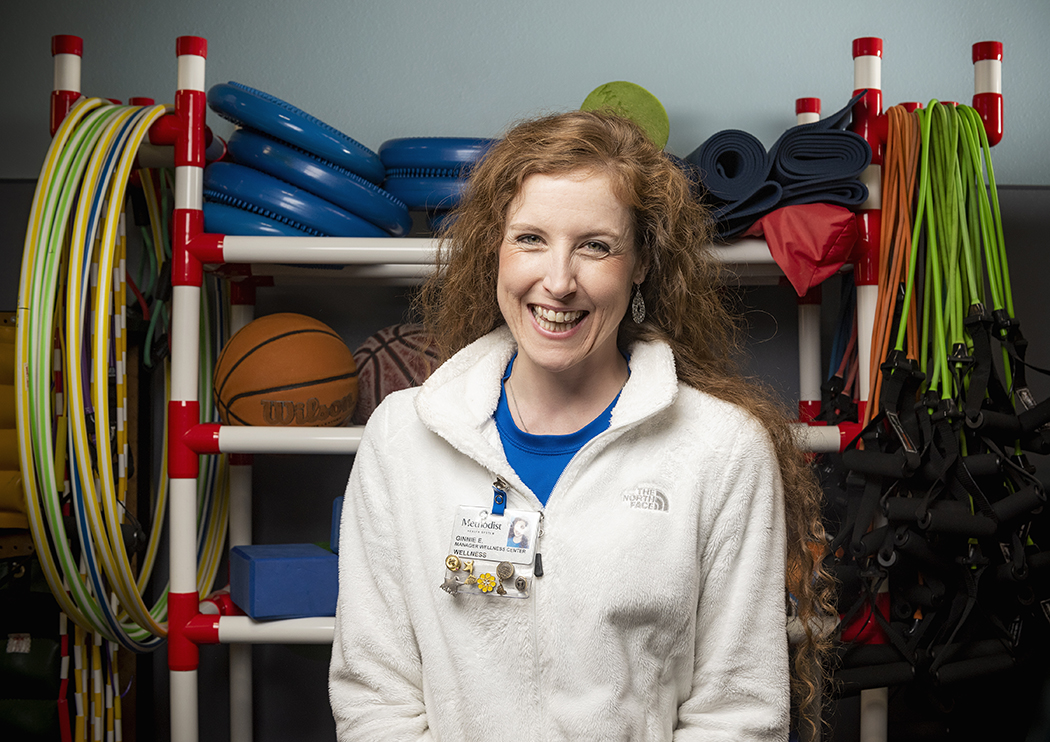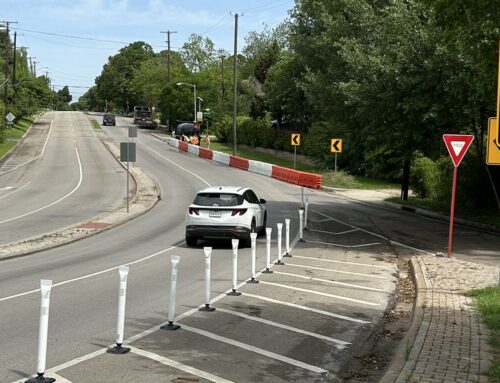Ginnie Emmott is the manager of Folsom Wellness Center at Methodist Dallas Medical Center. She is also a certified exercise physiologist, and she answered some questions about fitness.
What is your advice for someone who is starting with zero fitness?
Get started. The first thing is to speak with your doctor about starting anything new. But aside from that, it would be just to start. If you’re currently sedentary and not really doing anything, then maybe start with a 10-minute walk. Or stand up and down from your desk chair. Anything that you start will be more than you’re currently doing if you’re sedentary. One caution is not to do too much too soon. Don’t overdo it in the beginning. Start with 10 to 20 minutes and then move on from there.
How can people start to change their mindset?
Ask yourself, “Have I been active today?” or “What activity have I done today?” or “When can I be active today?” Try to use the word “active” or “activity” versus “exercise” or “workout,” especially if you are one to find it to be a chore. If you find exercise to be boring or not enjoyable, then find something you enjoy. For example, if you know you do not want to be on a treadmill because it’s boring, find an enjoyable activity. Do you like being outside? Do you like to dance? If you’re OK with the treadmill but get bored with same speed, same 30 minutes, ask, “How can I change my treadmill routine? Can I do intervals? Is it safe for me to increase speed or incline?”
How would you respond to someone who says they don’t have time to exercise?
You can find time for what’s important to you. Anybody can find 10 minutes to do something. If you have an hour lunch, use part of it to take a walk. Instead of sitting down to watch a kid’s practice, try walking around the field. When people say that, it’s usually because they’re trying to do too much, which is understandable.
What about someone who is in pretty good shape but wants to lose a little weight?
Reach out to someone for advice, someone in the professional field who can give you advice. If you’ve been doing the same 30-minute walk for two months, your body is probably used to that. Of course, nutrition is a big part of weight-loss. But as far as exercise, sometimes it’s changing it up so that your body keeps guessing. Strength training is also important. If you’re not currently doing anything to strengthen your muscles and maintain your muscle mass, that plays a role in weight-loss and weight-maintenance.
What other tips do you have for weight loss?
I would encourage people who have a weight-loss goal to steer away from the everyday step on the scale and instead focus on the habit changes. Because if you’re making some healthy habit changes, then you will lose weight. That is, if you have weight to lose and without other health conditions playing a role. Looking at the scale can be discouraging because 0.5 to 2 pounds per week is healthy weight loss.
What other questions do people commonly ask?
As far as physique goes, it’s the tummy area and the arms. What exercises can I do for those areas? The truth is that wherever you hold your body fat, that’s where your body is going to lose it from. There’s no spot reduction. Doing 100 crunches won’t reduce your midsection any faster. That’s a misconception about how to get rid of the tummy faster. It’s a mix of total activity and taking a look at your nutrition.
What is your best advice about nutrition and weight-loss?
Portion control. Especially when eating out. You don’t have to say “no” to any treat you might want. But take into mind those portions — the sweets, the added sugary beverages or foods. What size portion are you eating? Also try and focus on adding the good things rather than taking away the unhealthy things. Maybe you add a couple of servings of fruits and vegetables rather than telling yourself, “I can’t have a cupcake for the rest of my life.” You’re going to end up overdoing it once you allow yourself to have it. Moderation is key.






